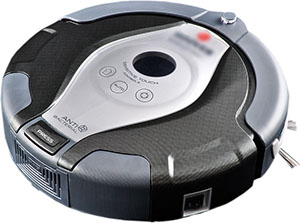Let's get a deep insight into a commercial robot vacuum cleaner. Not a reverse engineering or hacking. No schematic diagrams or code. This is a detailed description of the technologies used in one of the most famous device in contrast with what we use in our amateur robot. It's not a surprise that the sensors, actuators and controllers are very similar to the one described in these site. Let's compare them.
Get back in 2004, at the very beginning era of this kind of appliances. Marco, one of the founder of
Officine Robotiche wrote an article on
Fare Elettronica magazine about
Aspirone, the robot he built to convince his wife that the hours spent in the garage for the hobby was not useless.
The basic concepts and architecture of the commercial robots can be found in Aspirone and in most of our robots.
Dino
In a nutshell a robot is made up of:
Motion system - motors, wheels, castor, etc.
Sensors - InfraRed, mechanical and other to be conscious
about the environment
Safety system -
specialized sensors used to keep both the robot and the humans safe
Power - battery, charger and power supply to ensure the energy needed by all the components
Control - the brain of the robot that receives sensors data and drives the actuators to achieve its goal
Cleaning system - the actuators specific for this kind of robot that can change case by case
In the following pages all the sub-systems will be described and compared with what's inside amateur robots.
How does a cleaning robot work?
Have you ever wondered what's inside an automatic cleaner?
All the above-mentioned devices are present in this cleaning robot

